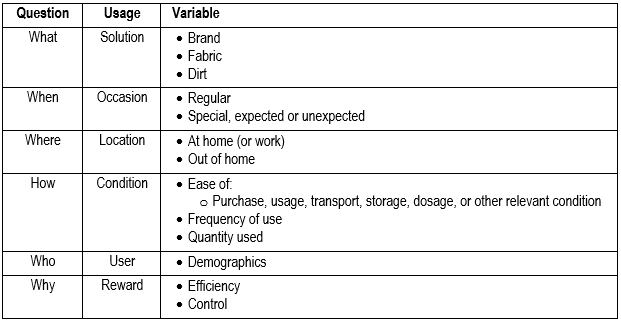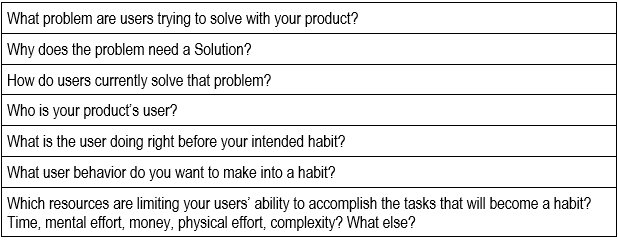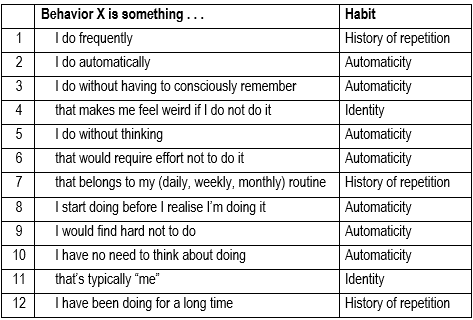Human behavior can be investigated with habit studies to identify and describe routines, processes and procedures people follow when doing what they do.
The overall objective of the study of human behavior and people’s habits is to discover automated, repetitive behaviors that, when modified, could extend brand success.
Habits are behaviors done with little or no conscious thought.
For instance, in the 90’s P&G found through surveys that users were unsure about the correct dosage of Dash powder laundry detergent. A simple stripe added to the dosage cap removed the uncertainty and caused volume sales to increase 10% almost overnight.
In 2005, after acquiring Gillette, P&G set the goal to expand into India. To do so they started ethnographic sessions to explore how people shaved in India. The outcome was the Gillette Guard razor, a single-blade system that, within three months, became the best-selling razor nationwide.
Try LogRatio’s fully automated solution for the professional analysis of survey data.
In just a few clicks LogRatio transforms raw survey data into all the survey tables and charts you need,
including a verbal interpretation of the survey results.
It is worth giving LogRatio a try!
Studying human behavior and habits
Tapping into human habits may have pleasant consequences for savvy brand builders. There are different ways to do so.
Surveys and observational (ethnographic) studies are the two most regarded methods.
In general, it is advisable to begin with a description of the context, identifying and describing the habits to be explored. If, for instance, we were to investigate how people do their laundry at home, we could split the process into 4 phases: purchase, usage, storage and disposal of laundry products. Each phase could have its own share of habits, and it could make sense to separate the investigation into distinct studies.
Observing how Indians shaved helped Gillette identify the different behavior compared to western shavers, which led to creating a razor tailored to the peculiar needs of Indians shaving in India. Then surveys on user acceptance of the new razor confirmed the validity of the new solution. In this case, the winning sequence was:
-
- Learn how they do what they do (with ethnography).
- Supply a better way of doing what they do (from the labs).
- Confirm they prefer the new solution to the old habit (with surveys).
How to identify habits with surveys
Habits are built upon a few key features that refer to two main concepts: Why we do what we do, and How we do it.
As for the Why, people expect a certain reward from a habitual act. Often in the form of efficiency and control, the reward could be saving time, saving thinking effort, saving money, feeling safe, feeling right, and the like.
The reward drives the automaticity of the behavior. In a stable context where the conditions do not change often, the frequency of repetition of an act may lead to developing automatisms. Being aware and motivated to obtain the reward closes the circle, and habits form.
Surveys try to identify and describe habits by means of questions we commonly use to investigate awareness and intention.
Following the 5W + How rule helps in formulating the questions.
If, for instance, we want to explore how people purchase laundry detergents, we could ask questions along these lines (read also the example questions mentioned in the blog posts titled Concept test, Copy test and Product test):

How to measure habits
In general, habits can be measured with a common Likert scale, of 5-, 7- or more answer classes.
For measurement purposes, read also section “How to investigate Attitude” of the blog post Usage & Attitude marketing research study.
The following table shows some questions that may help to identify habits:

Some behavioral researchers use the Self-Report Habit Index (SRHI) to measure habit strength.
SRHI comprises 12 statements. Respondents are asked about their degree of agreement with each statement.
The answers are expressed with a 7-point Likert scale ranging from Completely agree (1) to Totally disagree (7).
The drawback of this approach is that it asks 12 questions for each behavior. Testing 5 different behaviors, for instance, could easily result in a long and tiring process.
Self-Report Habit Index (SRHI): Statements to measure habit strength.

To reduce the respondent’s burden, Gardner and colleagues have developed a 4-item automaticity subscale (see green statements in the following table) called the Self-Report Behavioural Automaticity Index (SRBAI), which they claim to be reliable in measuring habit strength as compared to the more popular SRHI.
Self-Report Behavioural Automaticity Index (SRBAI): 4-item automaticity subscale to measure habit strength.

Sources
Gardner, B., Abraham, C., Lally, P., and de Bruijn, G.J., “Towards parsimony in habit measurement: Testing the convergent and predictive validity of an automaticity subscale of the Self-Report Habit Index” International Journal of Behavioural Nutrition and Physical Activity.
Bargh, J. A., “The four horsemen of automaticity: awareness, intention, efficiency and control in social cognition”. Handbook of Social Cognition, Vol 1 basic processes.
Nir Eyal (2019 ), “Hooked: how to build habit-forming products”. Penguin Random House LLC.

